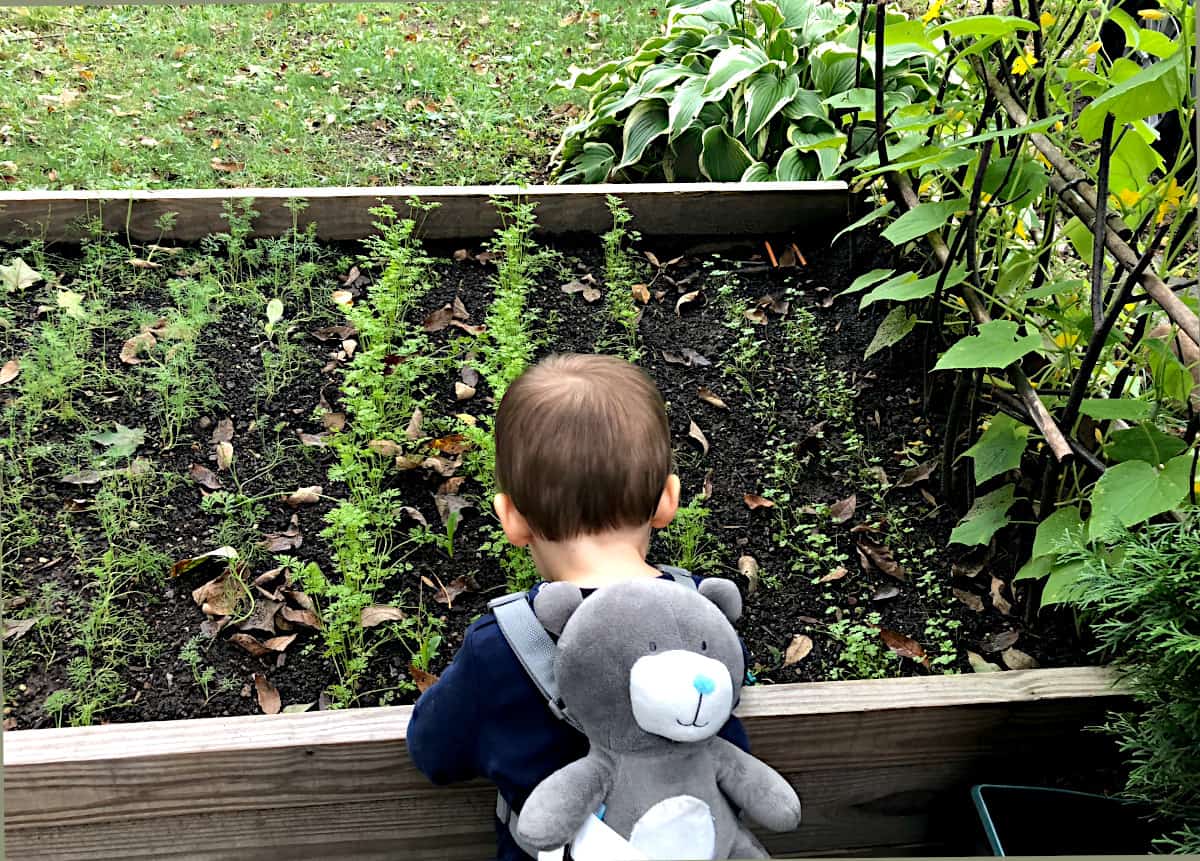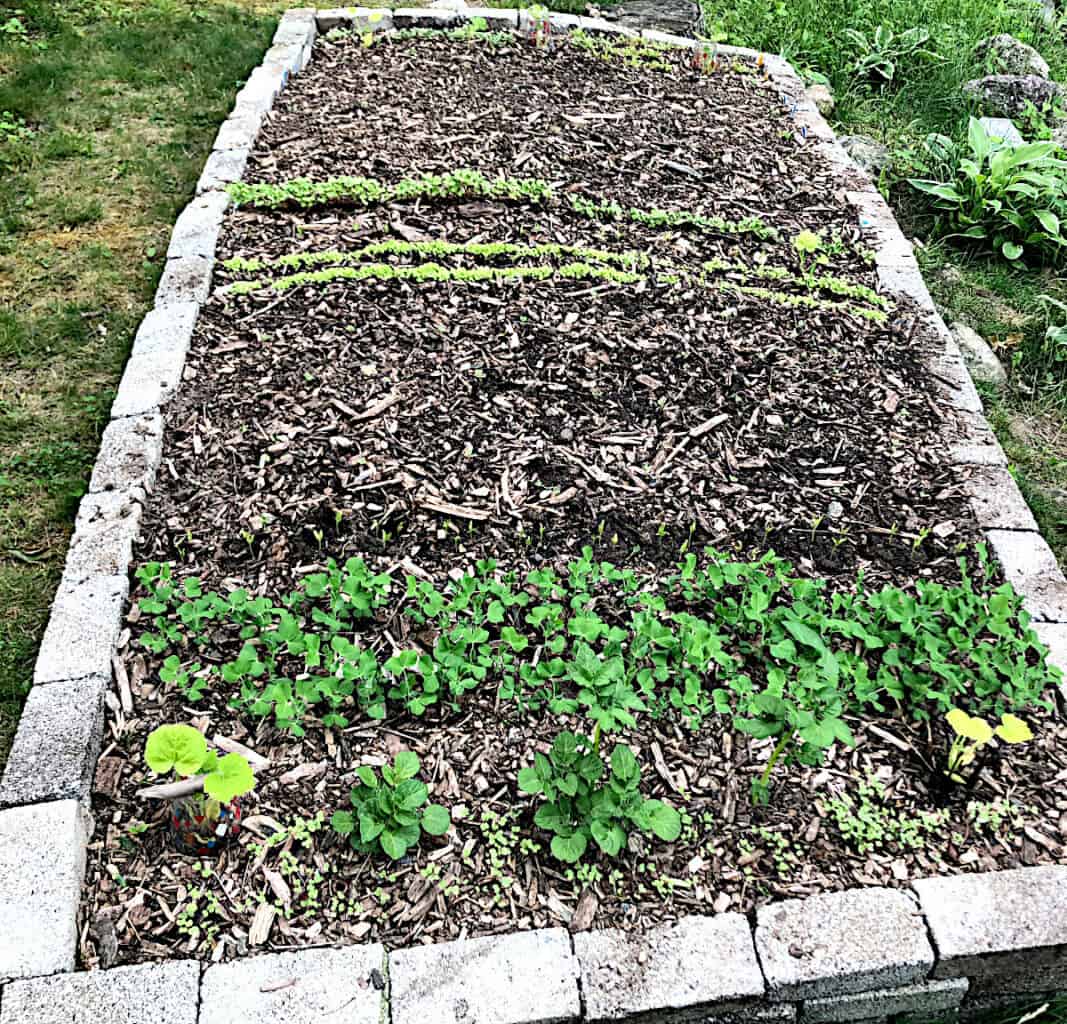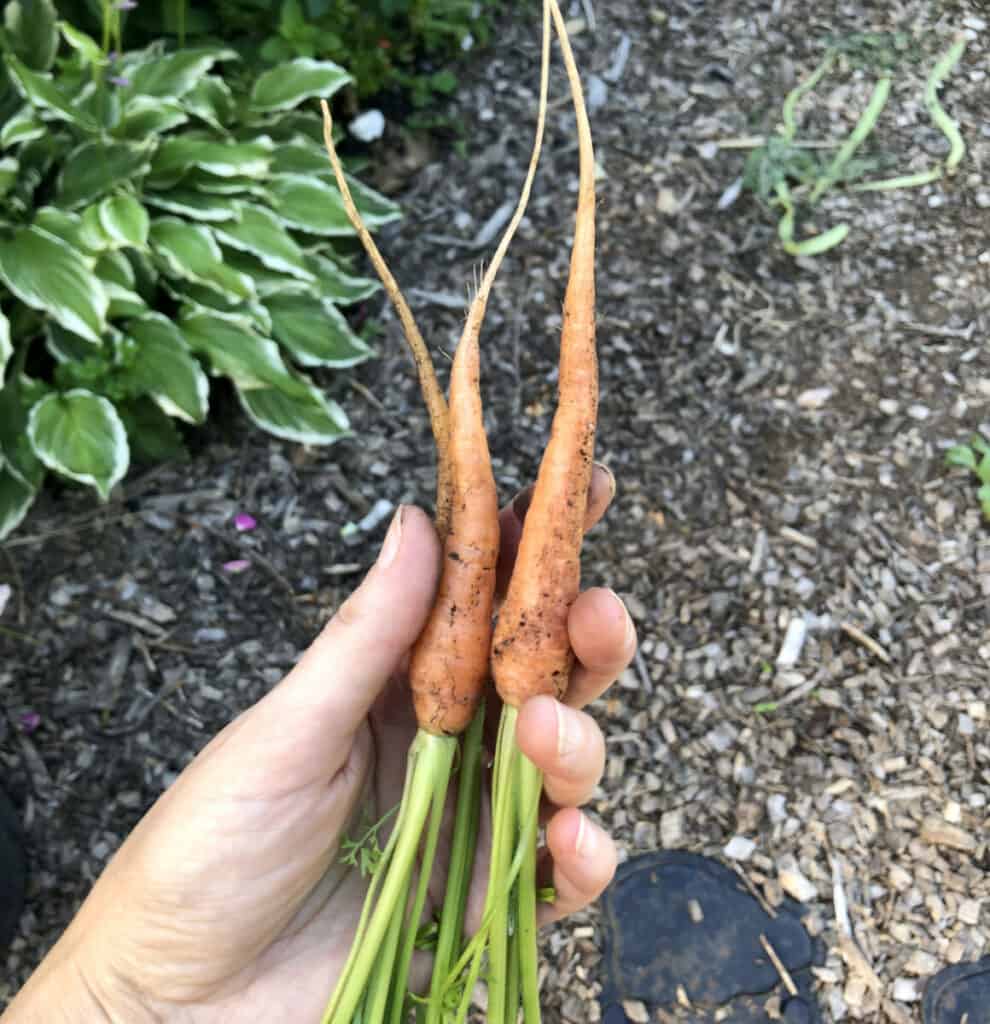I absolutely enjoy direct sowing. It is easy, spacing of the plants is done right there at sowing. Direct seeding saves time and money by eliminating seed trays, eliminating hardening off the seedling, and the need for transplanting.
Vegetables best to direct sow
- Carrots
- Radish
- Peas
- Beans
- Melons
- Radish
- Cucumbers
- Squash
- Winter squash and pumpkins
- Lettuce and leafy greens
- Turnips
- Kohlrabi
- Herbs

All the vegetables named in the list above I have sowed directly in the ground and they did well with less hustle.
In spring, before the last frost date, I direct sow carrots, radishes, peas, lettuce, and leafy greens. After the frost date, I direct sow beans, melons, cucumbers, corn, and squash. I also sow indoors even before the last frost date. The ones I sow directly are to be harvested later in the season. Thus, I can have two harvests of the same vegetables and fruit at two different times in the season.
What is direct seeding?
Direct seeding means sowing seeds directly in the ground in the garden. The seeds are sowed, germinated, and grow their full life cycle directly in the ground in the garden.
Methods of direct seeding
These are the methods of direct seeding, broadcasting, furrow method, drilling, or hill method also called dibbling.
Direct sowing by broadcasting
Broadcasting is a method of sowing seeds by randomly scattering larger amounts of seeds on the soil surface. The seeds are thrown onto the surface of the soil. Many types of crops are sowed using the broadcasting method. Produce like corn, poppy, wheat, and grains, in general, are being sowed by the broadcasting method.
The broadcasting method is a simpler, faster way of sowing seeds. This method however works for crops that do not require singular spacing and can be sowed and grown more densely. The broadcasting method is used mostly when a larger growing area needs to be sowed faster. It is mostly used in fields rather than regular home gardens.
Direct sowing by furrowing
Furrowing is one of the most widely used methods to direct seed in home gardens. Direct seeding in furrows means making a trail or rows in the soil and placing the seeds in it. This method is used mostly when sowing seeds in single rows or blocks of rows. Then the seeds are in the furrow, are covered with the soil, and water well.
I like this method because I can control the spacing of the seeds and the depth of the furrows. I use it when direct seeding radishes, parsnips, carrots, and corn.
Direct sowing by dibbler also called hill planting
In this method, the seeds are sowed in individual holes made by a dibbler or any tool for digging small holes for the seeds. A gardener makes a hole using a dibbler and the seeds is being placed in the hole, then covered with the soil and watered.
I like to use this method especially when direct sowing seeds that need wider spacing like squash and melons.
Direct sowing by drilling
Drilling direct sowing method is widely used to sow large crops by sowing seeds in uniform rows using specialized machinery called a seed drill. The machine drill in the ground drops the seed and covers it. This helps prevent pests such as birds from eating the seeds left on the surface and the wind from blowing the seeds away.
Home gardeners mostly use furrowing and dibbling. Dibbling is also used to plant seedlings.

How to direct seed
- Prepare the soil by tilling it if needed, and amending it, enriching it with organic matter, or fertilizer. The soil should be thawed, workable, and not too wet.
- Sow the seeds when the weather is right. In windy conditions, the seeds might be blown away. Choose morning time or late afternoon, or when overcast, to prevent water evaporation during hot days. Or cover your seeds with protection.
- Seeds need warmth, oxygen, and humidity to germinate. Sow the seeds into warm enough soil for the specific seed.
- Make a hole deep about three times bigger than the size of the seed, and place the seed in the hole. Cover with soil and tamp the top of the soil to firm the soil gently.
- Water thoroughly. Seeds need moisture to germinate. Keep the soil moist at all times. Do not let the soil dry out as this might delay germination and stress or kill the germinating seed.
- To help keep the soil moist, and prevent the seeds be eaten by the pests like birds, rodents, and such, the soil with a plank, cardboard, newspapers, or garden cover. This will keep the moisture in and the sun and pests out.
- Uncover the seeds once they germinated or if using a garden mesh or fabric it can be left on the seedlings to protect them from harsh weather conditions or pests.
Do you water every day after seeding?
Keep the soil surface with the seeds inside, moist every day with a spray bottle if uncovered. You can choose to cover the soil to help keep the moisture locked inside. Cover with newspapers, cardboard, planks, or garden covers. The surface of the soil needs to be kept till the seeds germinate. Check the soil and if it is getting dry, spray with mist or gentle flow to prevent seeds from being exposed or flushed and displaced.
How to protect directly sowed seeds
When sowing seeds directly, be aware of garden pests like birds, mice, squirrels, and chipmunks. They like to eat the seeds and often even dig them out and eat them. This can be prevented by covering the seeds with fleece cover, a carton, or a piece of wood while the seeds germinate. I like to use fleece cover especially because it is light enough to stay over the seeds longer until they are established seedlings that are not attractive to mice and other pests that would eat up seeds. Fleece cover also helps keep moisture and warmth in the soil which is crucial for seeds to germinate. Fleece cover also protects tender germinating seeds and seedlings from occasional frost and weather conditions, harsh sun, or harsh rain.

Direct seeding advantages
- Gardens or any area can be sowed and vegetated quickly and cost-effectively.
- The cost of seeds is lower than the cost of seedlings.
- Sowing seeds directly is less labor intensive and eliminates the time and labor put into growing seedlings.
- Some plants do not like their roots to be disrupted; direct seeding prevents root disruption. This especially applies to root crops like carrots, beets, radishes, and parsnips.
Direct seeding disadvantages
- The seeds can be eaten by pests like birds, rodents, or snails
- Since the seeds are not in a controlled environment, their germination can delay or some seeds might be lost due to rot when accusive rains or moisture, or can be killed by the harsh sun
- Plants tend to lodge more because of less root anchorage
What is your favorite vegetable to direct seed and what technique do you like to use in your garden?
How to start seeds and care for seedlings
Easy vegetables to start from seed indoors

